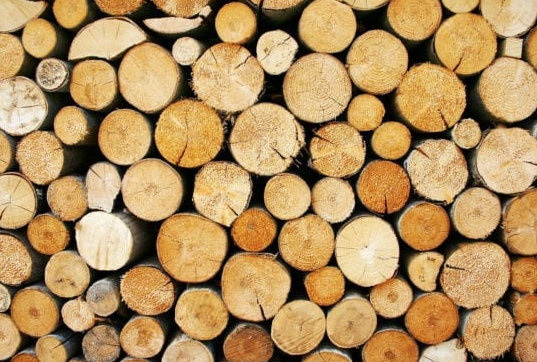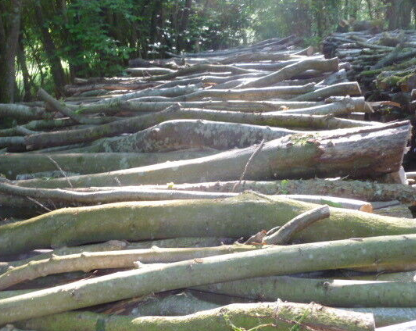Burning Bright and Clean: The Best Fuels for Wood-Burning Stove: Wood-burning stoves have a timeless appeal, offering warmth, ambiance, and even the satisfaction of self-sufficiency. But to enjoy the full benefits of your wood-burning stove, you need to choose the right fuel. In this blog, we’ll explore the correct fuels for wood-burning stoves, helping you make informed decisions for a cozy and efficient heating experience.
- Seasoned Hardwood – The Gold Standard
Seasoned hardwood, such as oak, maple, cherry, and hickory, is widely regarded as the best fuel for wood-burning stoves. Seasoned hardwoods have several advantages:
- High Energy Content: Hardwoods have a high energy density, meaning they produce more heat per unit of wood, allowing for longer burn times and better heating efficiency.
- Low Moisture Content: Properly seasoned hardwoods have a moisture content of around 20% or less, reducing the risk of creosote buildup and producing cleaner burns.
- Steady, Even Heat: Hardwood logs burn steadily and consistently, providing a comfortable, long-lasting heat source.
- Softwood – Use with Caution
While hardwood is the preferred choice, softwood, like spruce, and fir, can be used in wood-burning stoves. However, it has some drawbacks:
- Faster Burn: Softwoods tend to burn more quickly than hardwoods, requiring more frequent reloading of the stove.
- Higher Moisture Content: Softwoods generally have a higher moisture content, making proper seasoning crucial to reduce emissions and improve efficiency.
- Pellets – Clean and Convenient
Wood pellets have gained popularity due to their convenience and environmental benefits. Pellet stoves use compressed wood pellets, which are:
- Consistent in Quality: Wood pellets are manufactured to consistent standards, ensuring a uniform burn and minimal ash production.
- Low Moisture: Pellets typically have a low moisture content, reducing creosote buildup and air pollution.
- Automated Feeding: Pellet stoves often come with automatic feeding mechanisms, allowing for hands-free operation and precise temperature control.
- Avoid Treated or Painted Wood
Never burn treated wood, painted wood, or wood that has been in contact with chemicals. These materials release harmful toxins when burned, posing health risks and potentially damaging your stove and chimney.

- Proper Storage and Seasoning
Regardless of the type of wood you choose, proper storage and seasoning are critical. Seasoning involves allowing the wood to dry for at least six months to a year, preferably under cover, to achieve the optimal moisture content. Well-seasoned wood burns more efficiently and cleanly, reducing the risk of creosote buildup and chimney fires.
Conclusion
Choosing the correct fuels for your wood-burning stove is essential for safety, efficiency, and comfort. Seasoned hardwoods, with their high energy content and low moisture levels, are the gold standard for wood-burning stoves. Softwoods can be used with caution but require proper seasoning and maintenance. Wood pellets offer a clean and convenient alternative.
By selecting the right fuel and following best practices for storage and maintenance, you can enjoy the cozy warmth of your wood-burning stove while minimizing environmental impact and ensuring safe, efficient operation. Remember that safety always comes first, so adhere to manufacturer guidelines and have your stove and chimney inspected regularly for your peace of mind.

